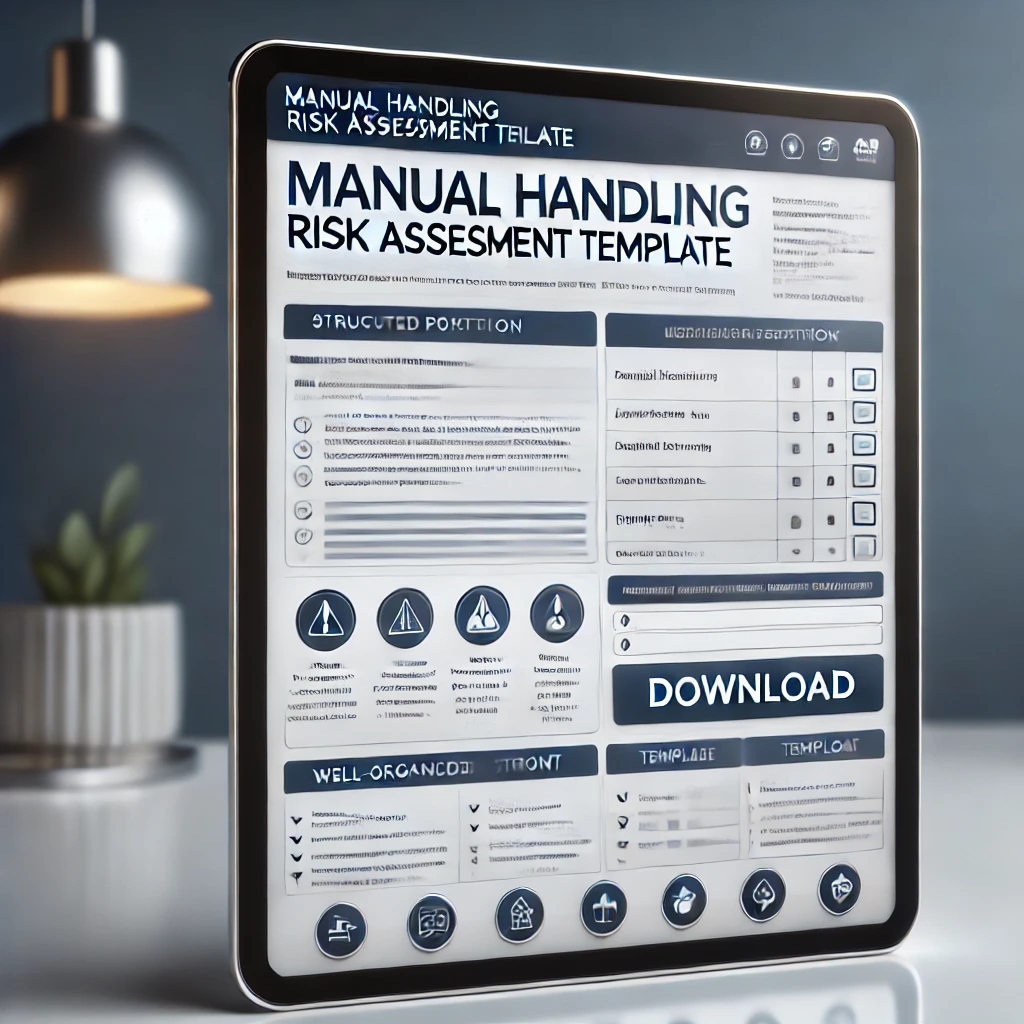Manual Handling Risk Assessment is important for keeping the workplace safe. Manual handling tasks happen often in many jobs and can cause accidents if not done safely. A manual handling risk assessment helps find dangers and put in place safety measures to reduce the risks of moving, carrying, pushing, or pulling heavy items. This Post will help you understand the main parts of a manual handling risk assessment and will answer an important question: What are the 5 ways to control risks for manual handling tasks?
What is a Manual Handling Risk Assessment?
A manual handling risk assessment is a careful way to look at the possible dangers from doing human work. The goal is to find dangers, evaluate how serious they are, and take steps to lower the chance of damage.
Why is Manual Handling Risk Assessment Important?
- Lowers the chance of getting hurt at work.
- Makes sure health and safety rules are followed.
- Increases effectiveness and output.
- Encourages a safe workplace.

Steps to Do a Manual Handling Risk Assessment
- Identify the Task: Determine what lifting, carrying, or moving tasks workers do.
- Observe the Environment: Look at the location where the tasks are performed. Check for any hazards or obstacles.
- Assess the Load: Consider the weight and shape of the items being lifted or moved.
- Analyze the Worker: Look at the abilities of the workers who perform the tasks. Take into account their physical condition.
Identify the task.
- What physical handling tasks are being done?
- Do workers have to lift, move, push, or pull heavy items?
Identify hazards.
- What are the possible risks, like lifting heavy things, bad body positions, and doing the same moves over and over?
- Are environmental things like uneven floors increasing risks?
Evaluate the Risks
- Rate how serious each risk is: low, medium, or high.
- Think about how often and how long you do manual handling jobs.
Implement Control Measures.
Use these 5 important ways to control risks (covered below).
Monitor and review.
Frequently check how well the tools are working and make changes if needed.
What are the five risk-control measures for manual handling tasks?
To reduce the dangers of manual handling, managers should take these five important actions:
- Avoid manual handling wherever possible.
- Reduce unnecessary physical work by using machines like forklifts, conveyor belts, and trolleys.
- Change work processes to reduce the need to lift and move big items.
- Assess the task and identify risks.
- Evaluate the weight, size, and form of loads.
- Think about what workers can do physically.
- Look for dangers in the surroundings, like slippery floors or bad lighting.
- Use Proper Mechanical Aids.
- Introduce lifting tools like hoists, pallet jacks, and dollies.
- Make sure workers know how to use mechanical tools safely.
- Provide appropriate training and education.
- Teach workers how to lift safely by bending their knees, keeping their backs straight, and using their legs to lift.
- Teach workers how to spot early signs of musculoskeletal diseases (MSDs).
- Improve workplace ergonomics.
- Change desks to make it easier to avoid bending and reaching.
- Keep things at waist height to avoid heavy lifting.
- Use job change to reduce the risk of injuries from doing the same tasks repeatedly.
Example of a Manual Handling Risk Assessment
Sample Situation:
A warehouse worker often lifts and moves boxes that weigh 20 kg. The risk estimate shows that lifting things for a long time raises the chance of back injuries.
Control Measures Implemented:
- A cart was added to lessen the need for lifting things by hand.
- Workers were trained on how to lift properly.
- Rack heights were adjusted for better access.
- A team-lifting policy was put in place for moving heavy items.
Doing a manual handling risk assessment is important for keeping the workplace safe and following health and safety rules. By using the 5 risk control measures, companies can greatly lower the chance of injuries and make their operations more efficient. If you need a ready-to-use Template, download the below from Download button
